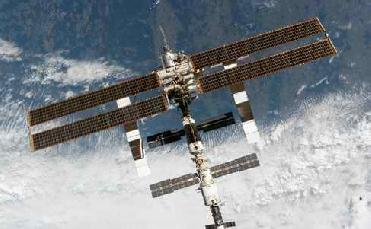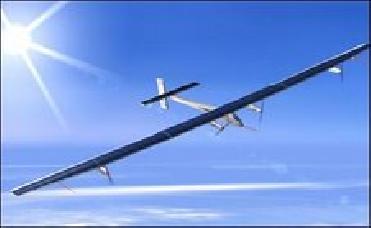
An astronaut aboard Space Shuttle Discovery captured this image of the International Space Station moments after the orbiter undocked from the Station in 2006. NASA photo
WASHINGTON (BNS): The International Space Station (ISS) will mark a decade of being the permanent outpost of human quest to understand the mysteries of space, and as the symbol of global cooperation to peacefully carry out these efforts.
Numerous organizations, countries and individuals across the globe will come together to celebrate the 10th birthday of the unique research laboratory.
On November 20, 1998, the orbital assembly of the space station began with the launch from Kazakhstan of its first bus-sized component, Zarya. The launch began an international construction project of unprecedented complexity and sophistication, NASA said.
ISS programme manager Mike Suffredini said that the station's capability and sheer size today are truly amazing. �The tremendous technological achievement in orbit is matched only by the cooperation and perseverance of its partners on the ground. We have overcome differences in language, geography and engineering philosophies to succeed,� Suffredini said.
Expedition 18 Commander Mike Fincke, now aboard the station said that with the International Space Station one has learnt so many things that one would be going to take that knowledge and apply it to flying to the Moon and Mars. �Everything we're learning so close to home, only 240 miles away from the planet, we can apply to the Moon 240,000 miles away,� Fincke said.
A few weeks after the US-funded, Russian-built Zarya module was launched from Kazakhstan, the space shuttle carried aloft the Unity connector module in December 1998. Constructed on opposite sides of the Earth, Unity and Zarya met for the first time in space and were joined to begin the orbital station's assembly and a decade of peaceful cooperation.
Ten years later, the station's mass has expanded to more than 627,000 pounds, and its interior volume is more than 25,000 cubic feet, comparable to the size of a five-bedroom house. Since Zarya's launch as the early command, control and power module, there have been 29 additional construction flights to the station: 27 aboard the space shuttle and two additional Russian launches, NASA said.
According to the premier science agency 167 astronauts representing 14 countries have visited the complex. Crews have eaten some 19,000 meals aboard the station since the first crew took up residence in 2000. Through the course of 114 spacewalks and unmatched robotic construction in space, the station's truss structure has grown to 291 feet long so far. Its solar arrays now span to 28,800 square feet, large enough to cover six basketball courts.
The ISS hosts 19 research facilities, including nine sponsored by NASA, eight by ESA and two by JAXA. Cooperation among international teams of humans and robots is expected to become a mainstay of space exploration throughout the solar system. The 2005 NASA Authorisation Act recognised the US orbital segment as the first national laboratory beyond Earth, opening it for additional research by other government agencies, academia and the private sector.
The station is a venture of international cooperation among NASA, the Russian Federal Space Agency, Canadian Space Agency, Japan Aerospace Exploration Agency, or JAXA, and 11 members of the European Space Agency, or ESA: Belgium, Denmark, France, Germany, Italy, the Netherlands, Norway, Spain, Sweden, Switzerland and the United Kingdom. More than 100,000 people in space agencies and contractor facilities in 37 US states and throughout the world are involved in this endeavor.
 Previous Article
Previous Article Next Article
Next Article












The Indian Air Force, in its flight trials evaluation report submitted before the Defence Ministry l..
view articleAn insight into the Medium Multi-Role Combat Aircraft competition...
view articleSky enthusiasts can now spot the International Space Station (ISS) commanded by Indian-American astr..
view article